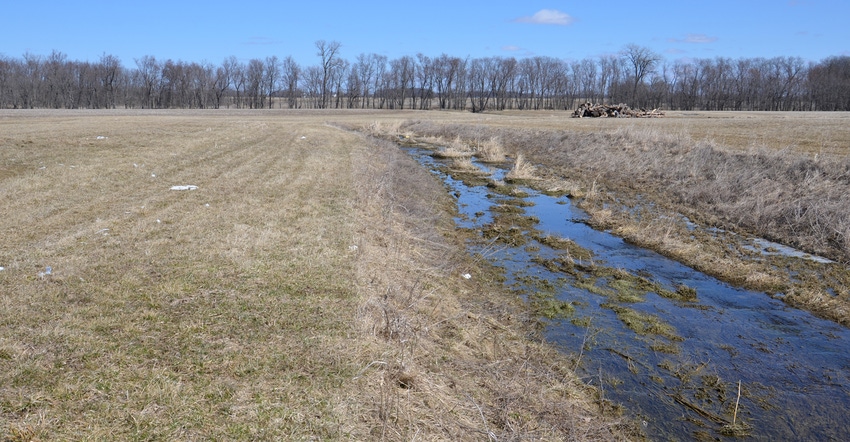
When people get serious about keeping nitrates out of streams, they look for unique solutions. Two newer strategies being used to reduce nitrate loss from fields are alternative ditches and saturated buffer strips.
“There is a real push to find ways to reduce the amount of nitrates leaving farm fields in the Midwest through tile lines and winding up in the Gulf of Mexico,” Dennis Bowman says. The concern is that unless nitrate levels drop soon, regulations for nitrogen use may be imposed, notes Bowman, an Extension educator in commercial agriculture at the University of Illinois.
Laura Christianson at the U of I, Jane Frankenberger at Purdue University and others have compiled a list of 10 ways farmers could potentially reduce the level of nitrates leaving farm fields through drainage tile. Here is a look at two of those methods.
• Alternative ditches can provide opportunities for denitrification, reducing nitrate levels.
Two-stage ditches are one of the more common forms of alternative ditch designs. A two-stage ditch with a bioreactor filled with wood chips was installed in 2012 at the Throckmorton Purdue Agricultural Center near Romney.
A typical two-stage ditch provides a wide shelf that sits above the main channel of the ditch. The shelf extends on both sides, Bowman notes. Instead of running swiftly into the ditch, water coming off the land or from a tile line pools on the shelf. Experts believe this creates opportunities for bacteria to denitrify the water before nitrates can move into the stream, he notes.
The process is called biofiltration, Christianson says. Besides increasing the opportunity to reduce nitrates through denitrification, this ditch design also allows for sediment to settle out instead of entering the stream directly. Sediment is the No. 1 pollutant in Midwest streams.
• Saturated buffer strips are effective at denitrifying water diverted into the strip.
What is a saturated buffer strip? Imagine a conventional buffer strip, which is typically a strip of grass 30 or more feet wide on either side of a drainage way. A conventional buffer strip, also called a filter strip, slows down water and allows sediment to settle out. Cost-share from USDA is often available for this practice.
“A saturated strip involves diverting water from the solid field drainage tile into a perforated tile that runs across the buffer to the stream,” Bowman explains. A simple diverter box structure pushes water into the perforated tile instead of allowing it to continue through the solid tile running underneath the buffer strip.
The saturated buffer works because roots take up nutrients, and because anaerobic bacteria break down nitrates in the soil, Christianson says. The practice is new, she notes, but one early test showed it was 100% effective at denitrifying water that diverted into the strip.
During peak flow in the tile, not all water goes into the perforated tile. In a one-year study of such a system, 40% of the flow bypassed the perforated tile. However, overall, that still meant a 60% reduction in nitrate reaching the stream, Christianson concludes.
Read about other nitrate reduction methods in these related stories about wetlands and bioreactors, and keeping nitrates in the root zone.
About the Author(s)
You May Also Like




